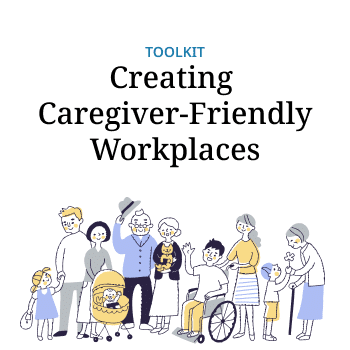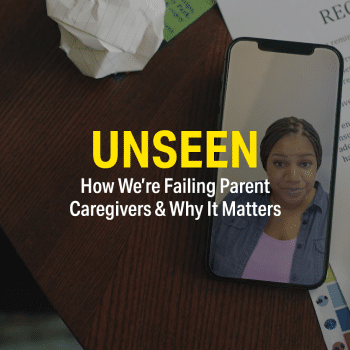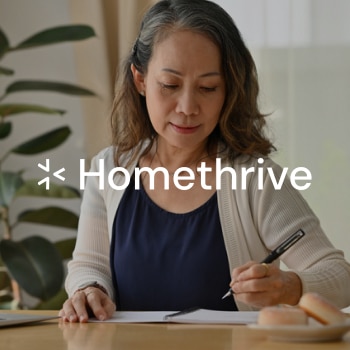
Explore the Caregiver-Friendly Workplaces Toolkit
Learn how companies with effective caregiver-friendly programs and policies can be better places to work and more profitable, too.
Creating Caregiver-Friendly Workplaces Toolkit
Companies across the country are recognizing how supporting caregivers helps their employees and their bottom lines. Here’s how they are getting started.
Presented by

The best human resource programs and policies are those that make life better for employees while also improving one or more aspects of the company’s profitability, resiliency, stability or risk profile. A properly designed caregiver support program fits this bill.
Companies can never know when their most valued and trusted employees will suddenly become caregivers, so having a program in place is the best way to retain talent and support the people who are key to your company’s success. Get started with these first five steps.

The first step is to take an honest look at how well your current policies support employees who need greater flexibility in order to care for a loved one. Take this free assessment to get a benchmarking score and a report showing where your company can make improvements.

Do you know how many caregivers you currently have in your workforce? Find out with an employee survey. Research shows that many workers are uncomfortable sharing this information with their supervisors due to the fear of being seen as less committed to their job, so it would be wise to conduct the survey anonymously.
Additionally, many caregivers do not identify with the term, and simply view themselves as a mother/father, daughter/son, sister/brother or friend, even though they have many caregiving responsibilities. Ensure your survey asks about the tasks involved in caregiving, not just the identify itself.
Your survey should include such questions as:
You may want your questions to distinguish between parents of typically developing children and others.
Be sure to include the question, “Would you be willing to serve on a steering committee to help our company improve how we support caregivers?” Recruiting volunteers at this step will help demonstrate company motive and commitment and give you a group of people to consult for Step 3.

Based on the results of your survey, convene an Employee Resource Group (ERG) and invite stakeholders to discuss and design a program of caregiver support that works for your company.
Make sure that the group includes a range of caregiver types (caregiving for an aging parent, caregiving for a young child with disabilities, caregiving for a spouse with a chronic health condition).
Ensure your group includes multiple hierarchical levels from the organizations (frontline workers, managers, directors, executives) so that all needs can be represented and to affirm management buy-in.
Set a timeframe for the Employee Resource Group to come up with a plan and suggested policies for your new caregiver-support program. Consider consulting with a benefit company such as Homethrive to help you manage these new benefits.
At this step, consider how to secure management support for the culture shift around caregiving — ideally with overt endorsement from a management-level employee who is also a caregiver. If employees feel that their supervisors do not support the new benefits, they will be less likely to take advantage of them.

Even at companies that already offer caregiver benefits, research shows that awareness among caregiver employees is low. A key part of your plan should be a detailed campaign for communicating your new benefits and making sure that employees know about the new program.
Add an additional chapter to your benefits handbook and send regular reminders in company emails, intranet announcements, newsletter and other communications. Communication should be company-wide and part of new hire orientation.
Even for employees who aren’t currently caregivers, knowing that company support is there when the time comes can provide great reassurance and loyalty to the company.
Here are three ways you can get started:

Learn how companies with effective caregiver-friendly programs and policies can be better places to work and more profitable, too.

The “Unseen” documentary gives an unfiltered, honest glimpse into the lives of caregivers and their families.

Whether caring for a loved one due to age, disability, or a medical condition, our intuitive online platform provides personalized advice and expert assistance, however and whenever it’s needed. We help caregivers discover a better way forward that prioritizes their loved one’s care and their own wellbeing, so they can thrive at home and at work.

Sign up to get notified about upcoming screenings, new bonus content releases, and get a 10% off coupon for our mech store!